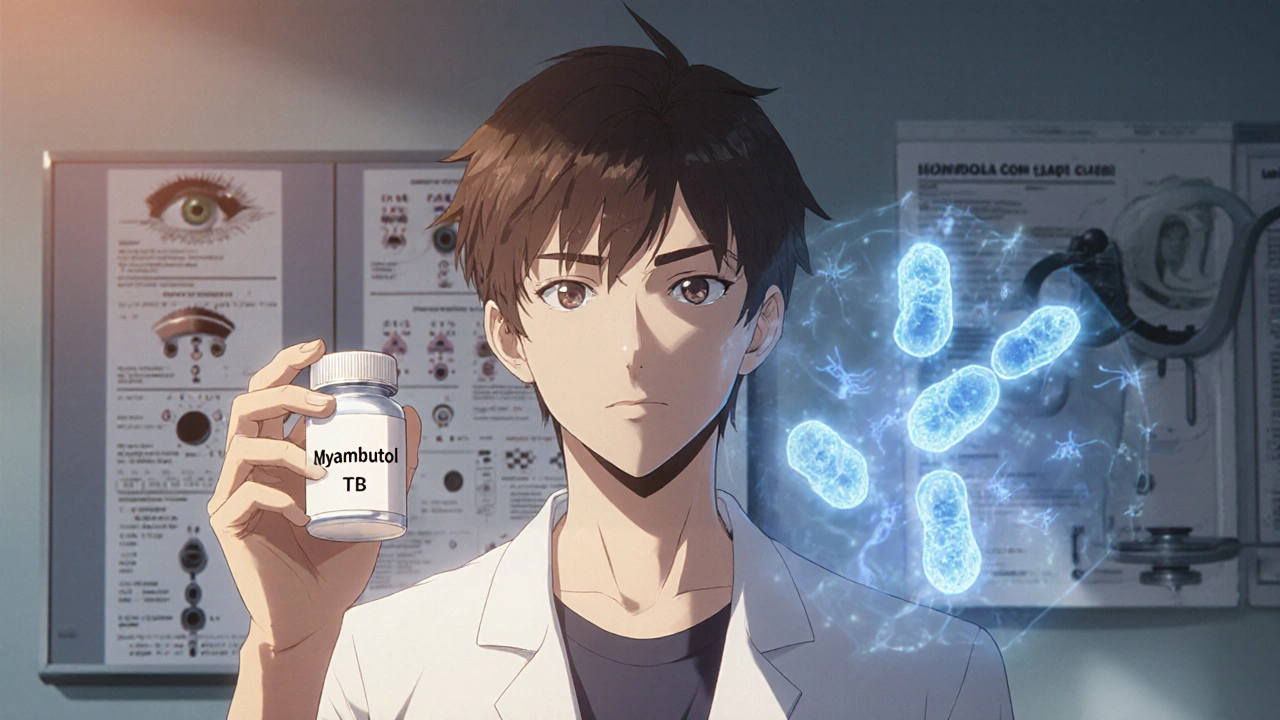
Compare Myambutol (ethambutol) with other tuberculosis drugs like levofloxacin, linezolid, and first-line alternatives. Learn when to use each, side effects, costs, and real-world treatment choices.
When you’re being treated for tuberculosis, Myambutol, a first-line antibiotic used to fight tuberculosis bacteria. Also known as ethambutol, it’s rarely used alone—instead, it teams up with other drugs like isoniazid and rifampin to stop the infection from spreading and reduce the chance of drug resistance. Myambutol doesn’t kill TB bacteria outright, but it stops them from building their cell walls, which slows the infection and gives your immune system a fighting chance.
What makes Myambutol different from other antibiotics is how specific it is. It’s mainly used for active TB, not latent infections. Doctors rely on it because it’s effective against strains that have become resistant to other drugs. But it’s not without risks. The biggest concern is optic neuritis, a rare but serious side effect that can affect vision. That’s why regular eye checks are part of the treatment plan—especially if you’re on it for more than two months. It’s not common, but catching it early can prevent lasting damage. Another thing to watch: if you have kidney problems, your dose may need to be lowered, since Myambutol leaves your body through your kidneys.
Myambutol doesn’t work in isolation. It’s part of a larger system. You’ll likely be taking it with isoniazid, another core TB drug that targets bacterial proteins, and rifampin, a drug that shuts down bacterial RNA production. Together, they form what’s called a multi-drug regimen—this is standard because TB bacteria are smart. If you only use one drug, they adapt fast. Using three or four at once makes it nearly impossible for them to survive. That’s why sticking to your full course matters, even if you start feeling better.
Some people worry about side effects like nausea or dizziness, but those are usually mild. The real focus is on vision changes—blurred sight, trouble focusing, or colors looking dull. If you notice any of that, tell your doctor right away. You don’t have to stop the drug immediately, but delaying action could mean permanent damage. And while Myambutol is mostly safe for adults, it’s not used in young children unless absolutely necessary, because they can’t reliably report vision changes.
What you’ll find in the posts below isn’t just a list of articles—it’s a practical guide to understanding how Myambutol fits into the bigger picture of TB treatment, drug interactions, and long-term management. You’ll see how it compares to other antibiotics, what to do if you miss a dose, and how other medications might affect how it works. There’s also info on managing side effects, why some people need longer treatment, and how labs track its effectiveness. This isn’t theoretical. These are real concerns people face when they’re on this drug. Whether you’re a patient, a caregiver, or just trying to understand what’s in your prescription, this collection gives you the facts without the fluff.

Compare Myambutol (ethambutol) with other tuberculosis drugs like levofloxacin, linezolid, and first-line alternatives. Learn when to use each, side effects, costs, and real-world treatment choices.